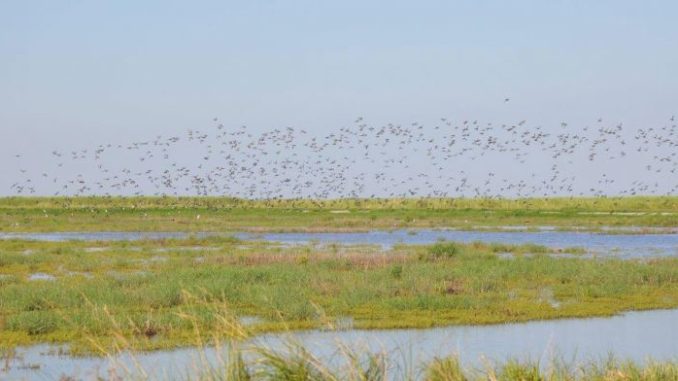
Almost quadruples number of birds counted in 2016, Reynolds says
Last week’s stretch of unseasonably cool temperatures was a pleasant surprise — and it looks like it helped usher in big numbers of blue-winged teal into Louisiana in time for today’s season opener.
According to the state’s waterfowl study leader, who wrapped up flights this week and submitted the September 2017 Aerial Waterfowl Survey Friday afternoon, the estimate of 373,000 teal is nearly four times last September’s estimate — and features the highest number of birds in Southwest Louisiana since 2008 and the highest in the southeastern part of the state since 2011.
According to the report, 352,000 birds were counted in the southwest, and 21,000 teal were counted in the southeast. The report also tallied 25,000 mottled ducks statewide.
“As in past years, the overwhelming majority of blue-wings in Southwest Louisiana were counted in the agricultural habitat, with large concentrations seen in fields north of Lacassine National Wildlife Refuge, southwest of Gueydan and north of Intracoastal City,” Larry Reynolds wrote in the report. “No big groups were noted in Southeast Louisiana, but most blue-wings were counted on transects in the marsh east of Venice and between Lafitte and Myrtle Grove. Conversely, less than 200 blue-wings and a handful of pintails were all that were seen at Catahoula Lake, the fewest on record for this survey.”
Reynolds said habitat conditions were characterized by high water levels in coastal marshes, and higher-than-average flooding in ag areas in the western part of the state.
“The heavy rain from Hurricane Harvey still covers some roads, has left water in many pastures, and produced marsh water levels 1 to 2 feet above normal in this region. As the survey progressed eastward, flooding in the agricultural and pasture lands declined to about average by eastern Vermilion Parish, with mostly managed water being available on the landscape,” Reynolds said in the report. “Water levels in the coastal marsh, however, remained above normal. In Southeast Louisiana, habitat conditions looked good to excellent in most places. Water levels were normal, and good growth of submerged aquatic vegetation was noted in most locations in the marsh.”
Reynolds said the cool front, with this season’s later-than-usual start date and later aerial survey period, combined to move a larger than average number of birds into Louisiana.
“Although wetland habitat conditions are good in states to the north of us, early cold fronts provided unseasonably cool weather over the past week,” he said. “At least in Southwest Louisiana coastal marshes, high water levels are currently providing sub-optimal foraging opportunities, so it may be difficult to hold migrants in those habitats compared to shallow flooded fields and pastures of the agricultural region.”
The 16-day season ends on Saturday, Sept. 30.


